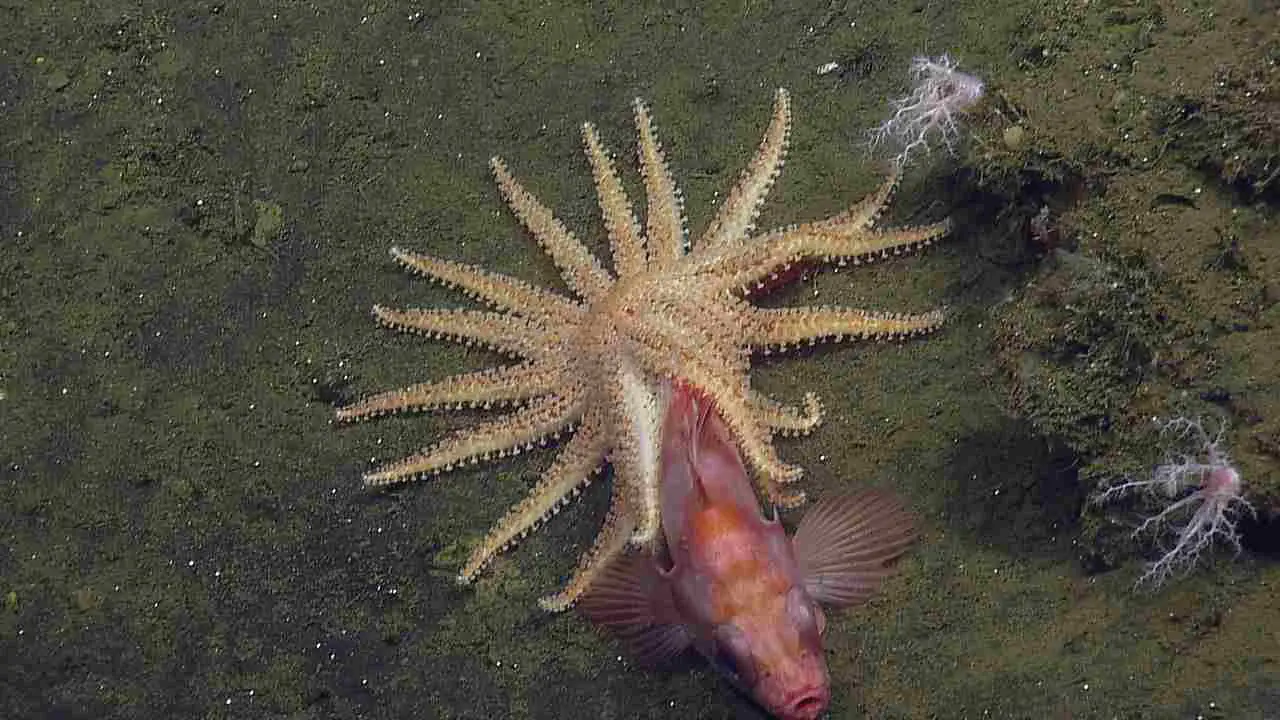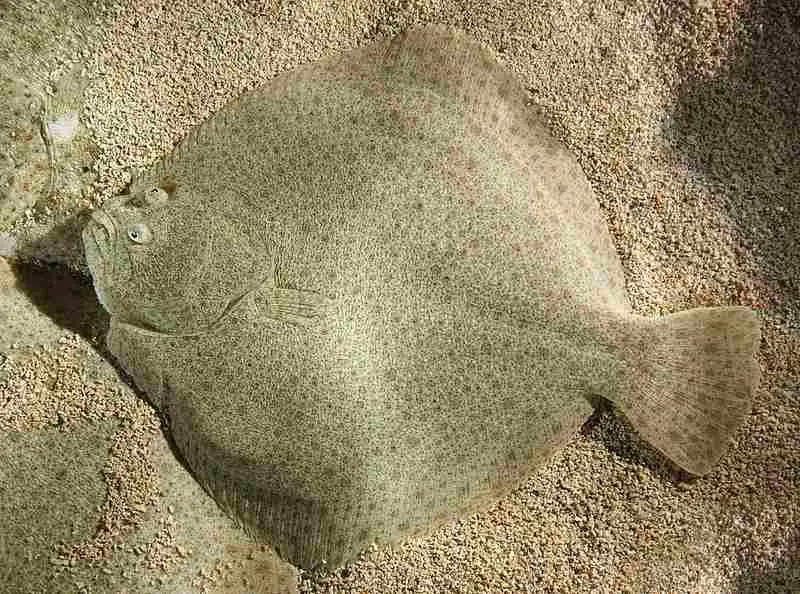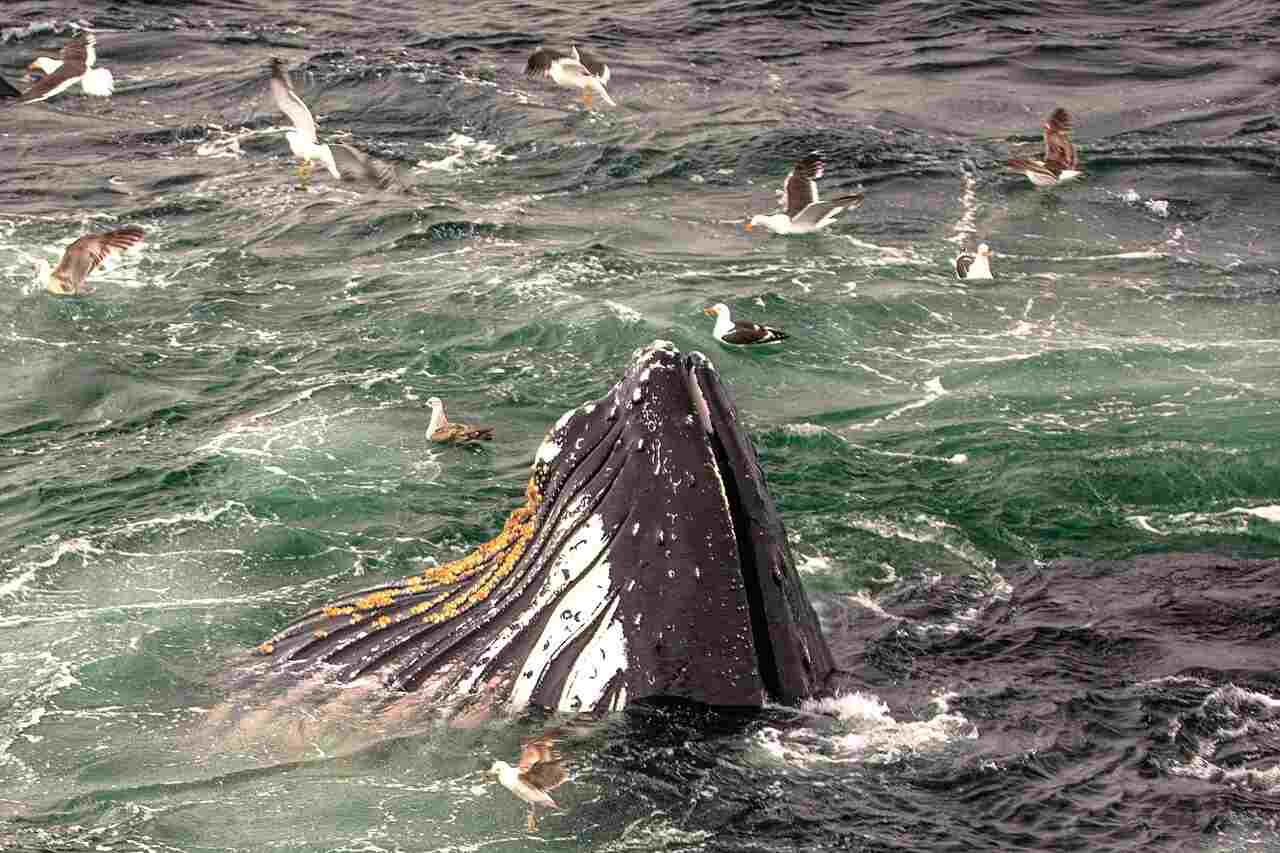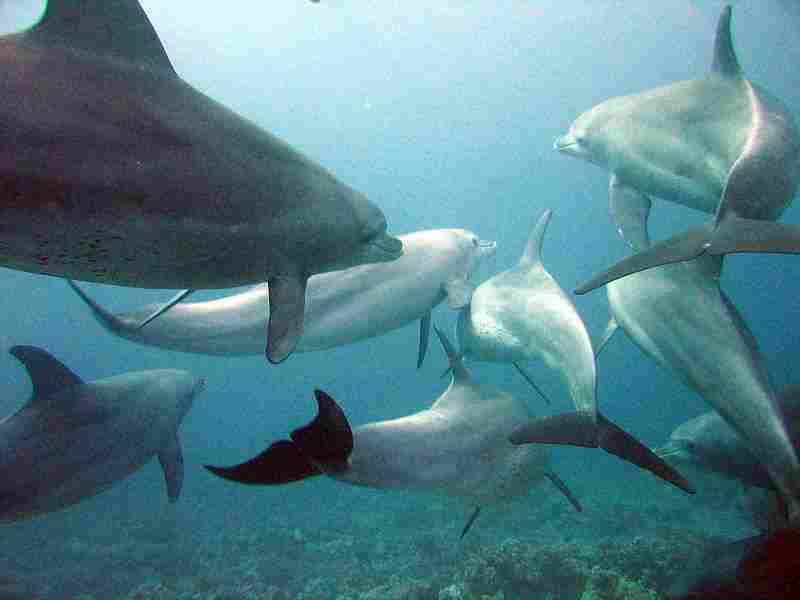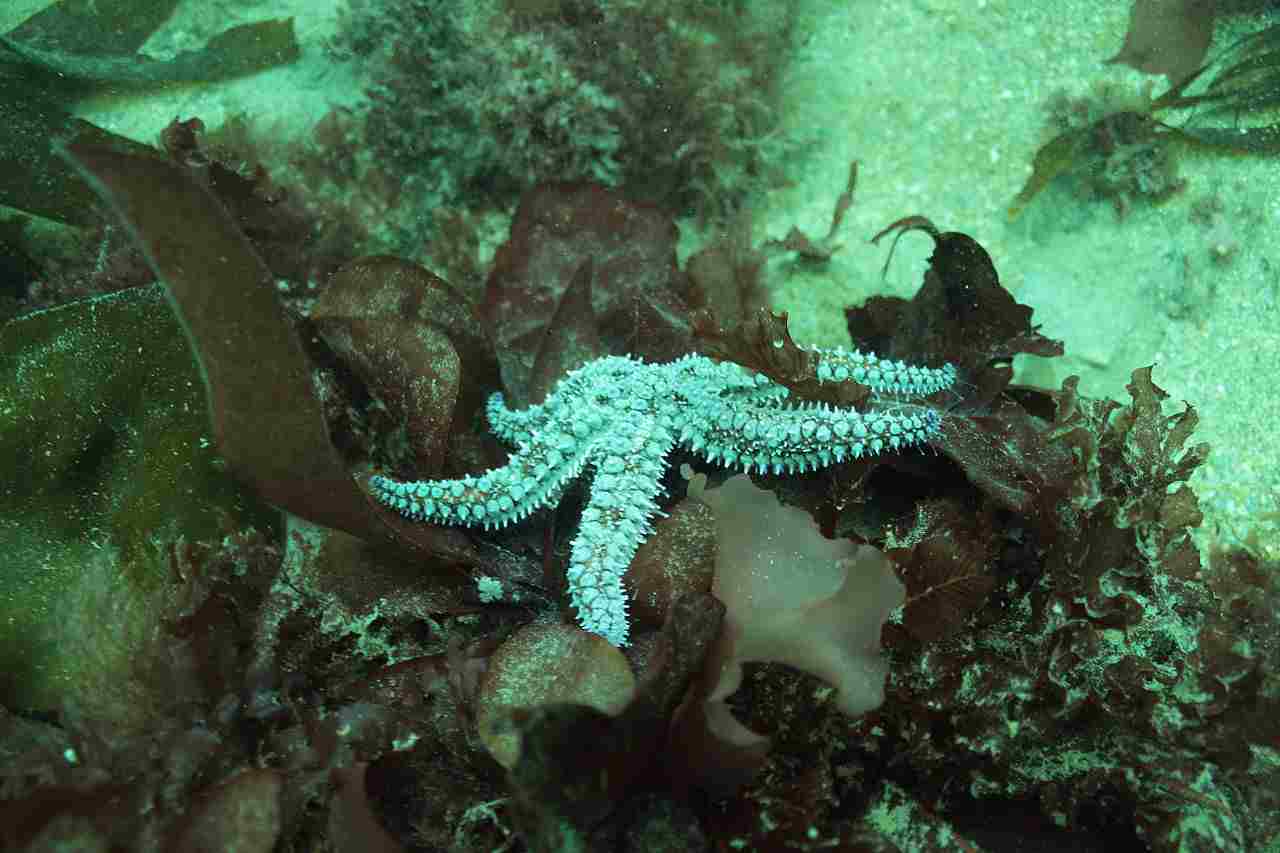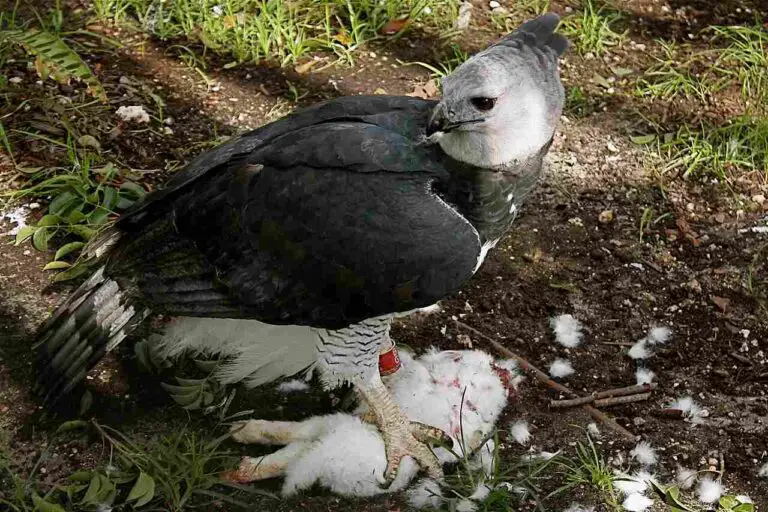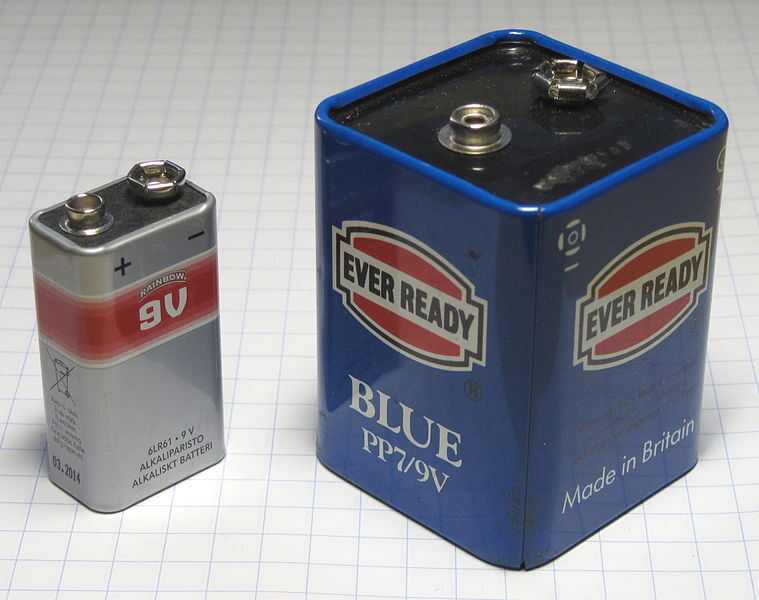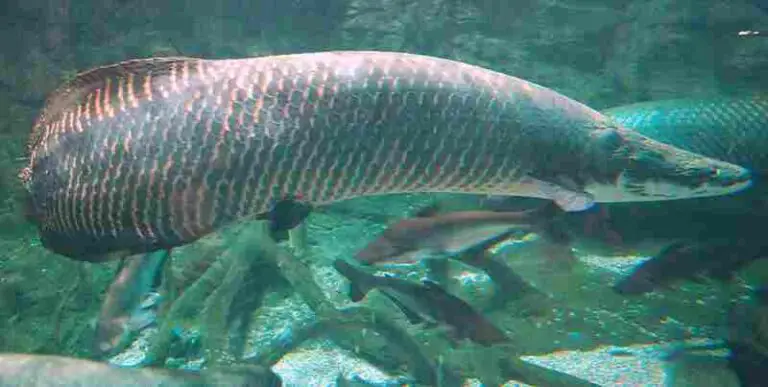17+ Detritivores In Open Ocean Ecosystem Discussed
Examples of detritivores in open ocean ecosystem are copepods, krill, amphipods, isopods, sea cucumbers, brittle stars, polychaete worms, euphausiids, mysids, salps, larvaceans, pteropods, foraminifera, ctenophores, radiolarians, chaetognaths, lanternfish, and detritus-feeding planktonic protists. These organisms play critical roles in nutrient cycling and support the broader marine food web. Their feeding habits help decompose organic matter and contribute to the biological pump, which is essential for carbon sequestration and maintaining the health of marine ecosystems.
1. Copepods
Copepods are a diverse group of small crustaceans that play a crucial role in open ocean ecosystems. These tiny organisms are found throughout the world’s oceans, ranging from shallow coastal areas to the deep sea. As detritivores, copepods feed on organic matter, including decaying plant and animal material, helping to break down and recycle nutrients within marine food webs. Their high reproductive rates and adaptability to various marine environments make them a foundational element of the oceanic food chain, supporting the diets of many larger predators such as fish, whales, and seabirds.
The impact of copepods on nutrient cycling and carbon sequestration is significant, as they contribute to the biological pump by consuming and sinking organic matter to deeper layers of the ocean. Copepods often form large swarms, increasing their effectiveness in processing detritus and facilitating the transfer of energy through marine ecosystems. Their presence is a critical indicator of ecosystem health, and changes in their populations can signal shifts in oceanic conditions, making them an important subject of study for marine biologists and ecologists.
2. Krill
Krill are small, shrimp-like crustaceans that are key detritivores in open ocean ecosystems. They are abundant in colder waters, especially in the Southern Ocean, where they are a primary food source for iconic marine species like whales, seals, penguins, and seabirds. Krill feed on phytoplankton and detritus, contributing to the breakdown of organic matter and the recycling of nutrients in the marine environment. They play a central role in the transfer of energy up the food chain, making them a critical component of oceanic ecosystems.
Krill swarms can be immense, often stretching for miles and comprising millions of individuals. This behavior amplifies their impact on nutrient cycling and energy transfer within the marine food web. Additionally, their fecal pellets, rich in carbon, can sink to the ocean floor, contributing to the sequestration of carbon and playing a role in regulating Earth’s climate. Given their importance in ocean ecosystems, krill populations are closely monitored, particularly in the face of climate change and increasing pressures from commercial fishing.
3. Amphipods
Amphipods are a diverse group of small crustaceans found in a wide range of marine environments, from shallow coastal waters to the deep ocean. As detritivores, they play a critical role in decomposing organic matter, aiding in nutrient recycling, and supporting the broader marine food web. Amphipods can be found in various habitats, including under rocks, within sediment, and even swimming in open water. Their adaptability and diverse feeding habits make them important contributors to the health of ocean ecosystems.
Amphipods serve as a vital food source for numerous marine species, including fish, birds, and other crustaceans. Their ability to break down detritus into smaller particles facilitates nutrient cycling and supports the growth of other organisms in the marine food web. In addition to their ecological importance, some species of amphipods have adapted to extreme environments, such as deep-sea hydrothermal vents and the polar regions, demonstrating their resilience and versatility in marine ecosystems.
4. Isopods
Isopods are another group of crustaceans that play a significant role in open ocean ecosystems, particularly as detritivores. They vary in size from microscopic to several centimeters in length and can be found in a wide range of marine environments. Isopods are often scavengers, feeding on decaying organic matter, but some species are also known to be parasitic. By consuming detritus, isopods contribute to the breakdown and recycling of organic material, aiding in nutrient cycling and supporting other marine life.
Isopods have adapted to many ecological niches, including coastal areas, deep-sea environments, and hydrothermal vents. This adaptability has allowed them to thrive in various conditions, making them an integral part of the oceanic ecosystem. Isopods are an important food source for fish and other marine organisms, playing a role in maintaining the balance of marine food webs. Their diverse range of habitats and feeding behaviors make them valuable indicators of environmental health and change.
5. Sea Cucumbers
Sea cucumbers are echinoderms that play a crucial role as detritivores in open ocean ecosystems. They are found in a variety of marine environments, from shallow coastal waters to the deep sea, and are known for their elongated, cylindrical bodies. Sea cucumbers primarily feed on detritus, consuming organic matter in the sediment and breaking it down, thus facilitating nutrient cycling. By doing so, they help maintain the health and stability of marine ecosystems.
Sea cucumbers are considered bioturbators, as they mix and aerate the sediment while feeding, promoting the recycling of nutrients and supporting other benthic organisms. Their activities contribute to the health of the ocean floor and help sustain the broader marine food web. Sea cucumbers are also a food source for various predators, including fish and sea stars. In some regions, they are harvested for human consumption, making them a valuable resource with both ecological and economic significance.
6. Brittle Stars
Brittle stars are another group of echinoderms that function as detritivores in open ocean ecosystems. These star-shaped organisms have long, slender arms and are highly mobile, allowing them to navigate through the sediment in search of organic matter. Brittle stars play an essential role in breaking down and recycling detritus, contributing to nutrient cycling and supporting the overall health of marine ecosystems. They are found in various habitats, from shallow waters to the deep sea, where they often live on the ocean floor.
Brittle stars are important components of the benthic food web, providing a food source for fish and other marine organisms. They are known for their rapid movement and ability to regenerate lost arms, which helps them evade predators and maintain their populations. As detritivores, brittle stars play a crucial role in maintaining sediment health and promoting biodiversity in marine ecosystems. Their presence and abundance are often used as indicators of environmental conditions and ecosystem health.
7. Polychaete Worms
Polychaete worms are a diverse group of annelid worms that play a significant role as detritivores in open ocean ecosystems. They are found in a variety of marine environments, from shallow coastal waters to the deep sea, and are known for their segmented bodies and numerous bristles. Polychaetes feed on detritus, breaking down organic matter and contributing to nutrient cycling in marine ecosystems. Their varied feeding habits and adaptability make them essential contributors to the health of oceanic environments.
Polychaete worms are vital to the benthic food web, serving as a food source for fish, crabs, and other marine organisms. They play an important role in bioturbation, as their feeding and burrowing activities mix and aerate sediment, promoting nutrient recycling and supporting other benthic life. Given their ecological significance, polychaete worms are often used as bioindicators to assess environmental health and monitor changes in marine ecosystems.
8. Euphausiids
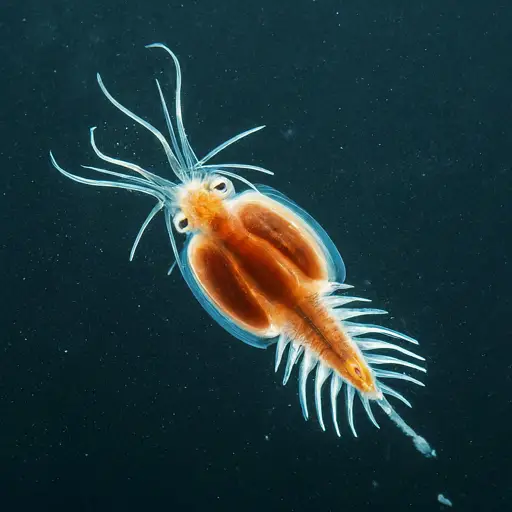
Euphausiids (which are a variant form of krill), are small crustaceans that play a crucial role in open ocean ecosystems as detritivores. Although they are similar to shrimp, euphausiids have unique characteristics, such as external gills and complex eyes, which set them apart. These organisms are key to the marine food web, feeding on phytoplankton and detritus, and forming massive swarms that can span miles. Their feeding habits contribute to nutrient cycling and energy transfer throughout the oceanic ecosystem.
Euphausiids are a primary food source for many marine species, including whales, seals, fish, and seabirds. This makes them critical to maintaining the balance of marine food webs and supporting the broader biodiversity of ocean ecosystems. Additionally, euphausiids contribute to carbon sequestration through their sinking fecal pellets, which transport organic matter to deeper ocean layers. Given their importance in nutrient cycling and energy transfer, changes in euphausiid populations are closely monitored to understand shifts in marine ecosystems.
9. Mysids
Mysids are small crustaceans that play an important role in open ocean ecosystems as detritivores. Resembling tiny shrimp, mysids are commonly found in both coastal and open ocean waters, where they feed on a variety of organic matter, including detritus and plankton. By breaking down and consuming organic material, mysids contribute to nutrient cycling and the overall health of marine ecosystems. Their adaptable feeding habits allow them to thrive in various environments, including estuaries and deep-sea habitats.
Mysids are an essential part of the marine food web, serving as a significant food source for fish and other predators. They often form dense swarms, which can be seen moving in large groups, further enhancing their role in nutrient recycling and energy transfer in ocean ecosystems. Mysids are known to exhibit daily vertical migrations, moving from deeper waters to the surface at night to feed, which plays a role in the distribution of nutrients throughout the water column. This behavior also helps mysids avoid predators and contributes to the resilience of their populations.
10. Salps
Salps are gelatinous zooplankton that play a unique role as detritivores in open ocean ecosystems. These barrel-shaped organisms are composed mainly of a transparent, jelly-like substance, which allows them to move through the water with ease. Salps feed by filtering detritus and other organic matter from the water, helping to clean and recycle nutrients in the marine environment. Their simple yet efficient feeding mechanism makes them highly effective detritivores, and their presence can significantly impact the distribution of organic material in the ocean.
Salps can form massive swarms, often stretching for kilometers, which amplifies their role in nutrient cycling and carbon sequestration. These swarms can remove substantial amounts of phytoplankton and detritus from the water column, contributing to the biological pump by transporting carbon to deeper ocean layers through their sinking fecal pellets. Salps are also a food source for various marine predators, including fish and sea turtles, which further highlights their importance in the marine food web. Given their role in nutrient cycling and carbon sequestration, salps are key organisms in understanding the dynamics of open ocean ecosystems.
11. Larvaceans
Larvaceans are small, gelatinous tunicates that play a crucial role as detritivores in open ocean ecosystems. These organisms are unique among tunicates in that they retain their larval form throughout life, hence the name “larvaceans.” Larvaceans are filter feeders, using a complex mucus “house” to trap detritus and other organic particles from the water. This filtration process not only helps them feed but also contributes to nutrient cycling and carbon sequestration by removing organic matter from the upper layers of the ocean.
Larvaceans are known for their rapid reproduction and ability to form dense populations, which enhances their impact on nutrient cycling and the biological pump. When their mucus houses become clogged, larvaceans abandon them, and these discarded houses sink to the ocean floor, carrying trapped organic material with them. This process contributes to the sequestration of carbon and other nutrients in deeper ocean layers, playing a role in regulating the Earth’s climate. Larvaceans are also a vital food source for many marine species, including fish and other zooplankton, reinforcing their importance in the marine food web.
12. Pteropods
Pteropods, also known as “sea butterflies,” are small, free-swimming mollusks that play an essential role as detritivores in open ocean ecosystems. These delicate organisms have wing-like extensions used for swimming, and they feed on a variety of organic matter, including detritus and plankton. Pteropods are crucial in nutrient cycling and contribute to the breakdown of organic material in marine ecosystems. They serve as a food source for many marine species, such as fish and whales, making them important players in the marine food web.
Pteropods are often used as indicators of ocean health because they are sensitive to changes in ocean chemistry, particularly ocean acidification. As they play a significant role in the marine food chain, any decline in pteropod populations could have cascading effects on other marine species. Their feeding habits help maintain nutrient balance in the ocean, and their shells, primarily composed of aragonite, contribute to the biogenic carbonate system, affecting oceanic carbon cycles.
13. Foraminifera
Foraminifera are single-celled protists with shells, or tests, made from calcium carbonate or other materials. They are an important group of detritivores in open ocean ecosystems, feeding on organic matter and contributing to nutrient cycling in marine environments. Foraminifera are found in a variety of marine habitats, from shallow waters to the deep sea, and are known for their diverse forms and structures. As they feed, they help decompose organic material and serve as a food source for other marine organisms.
The shells of foraminifera, upon death, accumulate on the ocean floor, forming a significant component of marine sediments. This accumulation plays a role in the global carbon cycle and provides valuable information for paleoclimatology and paleoceanography. The presence and abundance of foraminifera in sediment cores offer insights into past climate conditions and oceanic changes, demonstrating their importance in both current and historical marine ecosystems.
14. Ctenophores
Ctenophores, also known as “comb jellies,” are gelatinous planktonic organisms that play a role as detritivores in open ocean ecosystems. They are characterized by their rows of ciliated plates, or combs, which they use for locomotion. Ctenophores feed on detritus, plankton, and other small organisms, contributing to nutrient cycling and energy transfer in the marine food web. Their transparent bodies and graceful movements make them distinctive inhabitants of the open ocean.
Ctenophores can form large swarms, and their feeding activities have a significant impact on the populations of other planktonic organisms. As detritivores, they help break down organic material and recycle nutrients, supporting the broader marine ecosystem. They are also a food source for other marine predators, such as fish and larger gelatinous organisms. Despite their beauty and apparent delicacy, ctenophores are resilient and play a crucial role in maintaining the health and balance of open ocean ecosystems.
15. Radiolarians
Radiolarians are single-celled planktonic protists known for their intricate silica-based skeletons. They are an important group of detritivores in open ocean ecosystems, feeding on organic matter and contributing to nutrient cycling. Radiolarians are found throughout the world’s oceans, and their skeletons are often used in scientific studies to understand marine environments and historical climate patterns. As detritivores, radiolarians play a role in decomposing organic material and forming marine sediments.
When radiolarians die, their silica skeletons sink to the ocean floor, forming radiolarian ooze, a type of sediment significant in the geological record. This sedimentation process contributes to the global silica cycle and provides valuable data for paleoceanographic studies. Radiolarians serve as a food source for other marine organisms, supporting the marine food web and contributing to the overall balance of open ocean ecosystems.
16. Chaetognaths
Chaetognaths, or “arrow worms,” are a group of planktonic organisms known for their streamlined bodies and predatory behavior. Although primarily predators, some species also feed on detritus, contributing to nutrient cycling in open ocean ecosystems. Chaetognaths are common in both shallow and deep ocean environments, and their predatory role helps maintain the balance of planktonic populations. They play an important part in the marine food web, serving as a food source for fish and other predators.
Chaetognaths are known for their rapid movements and ability to capture prey with their grasping spines. While their predatory behavior can impact planktonic populations, their detritivorous habits contribute to nutrient recycling and the breakdown of organic matter. Chaetognaths are resilient and adaptable, allowing them to thrive in various marine environments. Their presence in open ocean ecosystems underscores the dynamic and interconnected nature of marine food webs.
17. Lanternfish
Lanternfish are a group of small, bioluminescent fish that play a role as detritivores in open ocean ecosystems. They are among the most abundant and widely distributed fish in the world’s oceans, often engaging in vertical migrations from deep waters to the surface at night. While lanternfish are primarily known for their bioluminescence, they also consume detritus and other organic material, contributing to nutrient cycling and supporting the marine food web. Their vertical migrations play a key role in transporting nutrients between ocean layers.
Lanternfish are an important food source for a variety of marine predators, including larger fish, seabirds, and marine mammals. Their abundance and role in nutrient recycling make them crucial components of ocean ecosystems. The bioluminescence of lanternfish serves multiple functions, including attracting prey and communicating with other lanternfish. This unique adaptation, combined with their role as detritivores, makes lanternfish a fascinating and essential part of the open ocean ecosystem.
18. Detritus-Feeding Planktonic Protists
Detritus-feeding planktonic protists encompass a diverse group of microscopic organisms that play a significant role in open ocean ecosystems. These protists, which include groups such as ciliates and flagellates, feed on organic matter and detritus, contributing to nutrient cycling and supporting the broader marine food web. As primary consumers of detritus, these protists are essential in breaking down organic material and facilitating the recycling of nutrients in the ocean.
Detritus-feeding planktonic protists serve as a key food source for other planktonic organisms and higher trophic levels in the marine food web. Their ability to consume a variety of organic particles allows them to adapt to different marine environments and contribute to the overall health of ocean ecosystems. Despite their microscopic size, these protists play a crucial role in maintaining the balance and stability of open ocean ecosystems, demonstrating the importance of even the smallest organisms in the marine environment.
*Summary
-
Copepods: Small crustaceans; key detritivores; support the marine food web; aid nutrient cycling.
-
Krill: Small crustaceans; significant detritivores; critical food source; contribute to carbon sequestration.
-
Amphipods: Diverse small crustaceans; important in nutrient recycling; serve as a food source for other marine life.
-
Isopods: Small crustaceans; aid nutrient cycling; some are parasitic; significant in marine food webs.
-
Sea Cucumbers: Echinoderms; break down organic matter in sediment; important in bioturbation; contribute to nutrient recycling.
-
Brittle Stars: Echinoderms; detritivores; serve as food for other marine organisms; help maintain sediment health.
-
Polychaete Worms: Annellids; detritivores; important in nutrient recycling; significant food source for other marine life.
-
Euphausiids: Also known as krill; important detritivores; support marine food webs; contribute to carbon sequestration.
-
Mysids: Small crustaceans; important detritivores; play a role in nutrient cycling; significant in marine food webs.
-
Salps: Gelatinous plankton; feed by filtering detritus; form large swarms; contribute to carbon sequestration.
-
Larvaceans: Gelatinous tunicates; use mucus houses to filter feed; contribute to carbon sequestration and nutrient cycling.
-
Pteropods: Small mollusks; detritivores; key food source for marine life; sensitive to ocean acidification.
-
Foraminifera: Single-celled protists; detritivores; significant in forming marine sediments; used as paleoceanographic indicators.
-
Ctenophores: Gelatinous plankton; feed on detritus and plankton; serve as food for other marine life.
-
Radiolarians: Single-celled protists; known for silica skeletons; contribute to marine sediments; significant in nutrient cycling.
-
Chaetognaths: Arrow worms; primarily predators but some are detritivores; serve as food for other predators.
-
Lanternfish: Small bioluminescent fish; detritivores; important food source; engage in vertical migrations.
-
Detritus-Feeding Planktonic Protists: Diverse group of protists; significant in nutrient cycling; serve as food for other marine life.
| Organism | Description |
| Copepods |
Small crustaceans; key detritivores; support marine food web.
|
| Krill |
Small crustaceans; significant detritivores; critical food source.
|
| Amphipods |
Diverse small crustaceans; important in nutrient cycling; food source.
|
| Isopods |
Small crustaceans; aid nutrient cycling; some are parasitic.
|
| Sea Cucumbers |
Echinoderms; break down sediment; contribute to nutrient cycling.
|
| Brittle Stars |
Echinoderms; detritivores; maintain sediment health; food source.
|
| Polychaete Worms |
Annellids; detritivores; significant in nutrient cycling; food source.
|
| Euphausiids |
Also known as krill; key detritivores; carbon sequestration role.
|
| Mysids |
Small crustaceans; detritivores; significant in nutrient cycling.
|
| Salps |
Gelatinous plankton; filter detritus; contribute to carbon sequestration.
|
| Larvaceans |
Gelatinous tunicates; filter feed; use mucus houses; carbon sequestration.
|
| Pteropods |
Small mollusks; key food source; sensitive to ocean acidification.
|
| Foraminifera |
Single-celled protists; detritivores; form marine sediments.
|
| Ctenophores |
Gelatinous plankton; feed on detritus and plankton; key food source.
|
| Radiolarians |
Single-celled protists; contribute to marine sediments; nutrient cycling.
|
| Chaetognaths |
Arrow worms; primarily predators; some detritivores; food source.
|
| Lanternfish |
Small bioluminescent fish; detritivores; engage in vertical migrations.
|
| Detritus-Feeding Planktonic Protists |
Diverse group of protists; significant in nutrient cycling.
|
